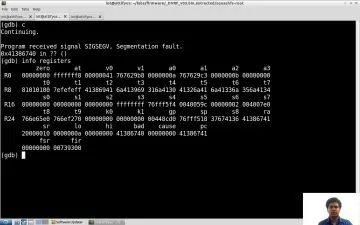Implementing Database Security for Beginners
Bluelime Learning Solutions
1:55:51
Description
Secure your databases, prevent attacks and unauthorized access.
What You'll Learn?
- Enable Virtualization
- Installing Virtual Machine
- Installing and connecting to SQL Server
- Learn how SQL Injection works
- Learn how to prevent SQL injection Attacks
- Enforce Authentication Security on SQL Server Database Server
- Implement Permission Level Access
- Implement Auditing to protect the integrity of the database system
Who is this for?
More details
DescriptionDatabase security concerns the use of a broad range of information security controls to protect databases against compromises of their confidentiality, integrity and availability.
Database security includes a variety of measures used to secure database management systems from malicious cyber-attacks and illegitimate use. Database security programs are designed to protect not only the data within the database, but also the data management system itself, and every application that accesses it, from misuse, damage, and intrusion.
Database security encompasses tools, processes, and methodologies which establish security inside a database environment.
Attackers constantly attempt to isolate and target vulnerabilities in software, and database management software is a highly valuable target. New vulnerabilities are discovered daily, and all open source database management platforms and commercial database software vendors issue security patches regularly. However, if you don’t use these patches quickly, your database might be exposed to attack.
A database-specific threat involves the use of arbitrary non-SQL and SQL attack strings into database queries. Typically, these are queries created as an extension of web application forms, or received via HTTP requests. Any database system is vulnerable to these attacks, if developers do not adhere to secure coding practices, and if the organization does not carry out regular vulnerability testing. Adding authentication, permission level access and auditing can help implement security for database systems.
Who this course is for:
- Beginners to implementing database security
Database security concerns the use of a broad range of information security controls to protect databases against compromises of their confidentiality, integrity and availability.
Database security includes a variety of measures used to secure database management systems from malicious cyber-attacks and illegitimate use. Database security programs are designed to protect not only the data within the database, but also the data management system itself, and every application that accesses it, from misuse, damage, and intrusion.
Database security encompasses tools, processes, and methodologies which establish security inside a database environment.
Attackers constantly attempt to isolate and target vulnerabilities in software, and database management software is a highly valuable target. New vulnerabilities are discovered daily, and all open source database management platforms and commercial database software vendors issue security patches regularly. However, if you don’t use these patches quickly, your database might be exposed to attack.
A database-specific threat involves the use of arbitrary non-SQL and SQL attack strings into database queries. Typically, these are queries created as an extension of web application forms, or received via HTTP requests. Any database system is vulnerable to these attacks, if developers do not adhere to secure coding practices, and if the organization does not carry out regular vulnerability testing. Adding authentication, permission level access and auditing can help implement security for database systems.
Who this course is for:
- Beginners to implementing database security
User Reviews
Rating
Bluelime Learning Solutions
Instructor's Courses
Udemy
View courses Udemy- language english
- Training sessions 19
- duration 1:55:51
- Release Date 2022/12/24
















